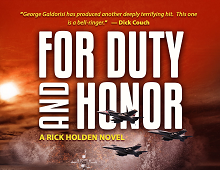A Novel in No Time

No time to write? Sure there is. With all the technology at our command we can write where we’ve never been able to do so before.
One piece by Kit Eaton helped pull all that together for me…it was even inspiring! Here’s how he began:
It used to be that when a moment of inspiration struck writers, they would have to rush over to a stone tablet, or find parchment and ink, to record their thoughts. Later, writers had to find paper and a typewriter, or a laptop or desktop computer, to get busy with their storytelling.
Nowadays, they can write into a smartphone and tablet app almost anywhere when an idea seizes them. So what are some of the popular apps for scribes?
Storyist is the writing app I use most often to write this column, books and other articles. The app is a full-featured text editor, giving people the ability to customize fonts, colors and page formatting, embed images, and more. The app also has predesigned page formats to help write screenplays, manuscripts and novels.
To help build a novel, Storyist provides different types of “story sheets” to work on. You can use the sheets to note information about characters, plot points, scene settings and other details. This part of the app is surprisingly powerful, and I have found that the preformatted sections of the story sheets (for example, the Smells heading under the Settings story sheet) help me think about characters and scene settings.









